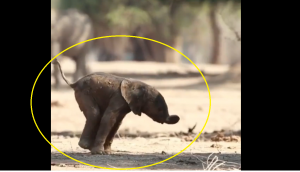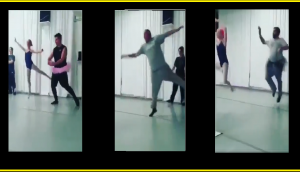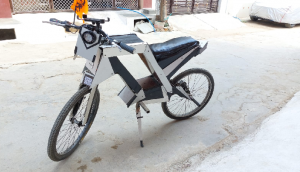
It was my first night out in Delhi and some friends and I went to the bar just around the corner from our hotel. As we entered the dingy upper floor we were slapped in the face by sweat and bass. The scene on the dance-floor resembled feeding time at the lion's pen at the zoo, as sweaty males slowly closed in on vulnerable women.
Perhaps it's just me, but I found the atmosphere at this Trap/EDM club far from friendly. In fact, I wouldn't have batted an eyelid had there been a room in the club designated for people to fight each other!
Trap/EDM music has a BPM of 140, so high that it raises the blood-pressure of everyone in the room. Adrenaline is pumped into the body as a result of the music's heavy drops and spine shattering bass, and this, coupled with alcohol or drugs could lead to aggression as stress levels rise.
You know for sure that this genre of music raises people's heart rates when you go to the gym. Because at gyms, they blare Trap/EDM to help people work out. If the music has this effect on people in clubs and in gyms, then what effect could it have on a driver?
What is Trap/EDM?
Trap in its purest form originated from the southern US in the late 1990s courtesy artists Young Jeezy, Gucci Mane and T.I. The 'trap' relates to being trapped within the realms of drug-dealing. The music is recognised for its offensive lyrics and constant references to drugs and violence that represent the hardships of the neighborhoods in which the artists grew up in. Trap music is the glorification of violence and the way it references women has an impact on the way we may view violence and women.
In recent years, Trap has been combined with EDM (Electronic Dance Music), arguably making a more intense scene as the music is faster though the lyrics remain.
You could argue that Trap/EDM could lead to increased violent behavior, thanks to the offensive lyrics and thumping music. For example, I would prefer my sister to watch a folk singer instead of going to a Trap gig, purely because of the atmosphere the music creates.
But its recent rise in popularity means more people are listening to the music. And since it attracts attention, it also attracts criticism. Just because the music creates a shady atmosphere doesn't mean shady acts take place. The experience of this atmosphere is different from our daily lives, so it's attractive. Yet, we are unlikely to commit a crime after listening to Su Real's new album, Trapistan.
Does music and art influence behaviour?
I wrote to Su Real with this chicken and egg question: Does art influence real life or does real life influence the artist? Here's what Su said: "The roots of violent hip hop lay in the African American community wishing to express what they saw happening in their communities - often being denied a voice in mainstream media. Remove the music, and the violence was already there! Does hip hop and its grandchild trap music incite the violence or does it merely give it an artistic voice to represent what's really going on? Gang and drug related violence was always there, no matter what tune the offenders were singing."
We can all see the effect art form have on us: what we wear and how we act in public is often influenced by what we watch and the magazines we read. Music is somewhat different. It is escapist and portrays a different reality which we can indulge in, but never repeat. So can we blame sexual assaults and violence on the streets on Trap/EDM? There is no direct correlation. And even if a crime is committed, imagine being 'convicted under the influence of trap'!
Though the music can create a misogynist environment where women are uncomfortable and men aggressive, there are other influences that are more likely to cause harm, i.e. alcohol and drugs.
Correlation between rap and crime:
Vice did a recent survey on the correlation between rap music and crime.

]Figure from Vice article and Rap Research Lab-http://rrlstudentresearch.tumblr.com/post/96559384724/crime-rates-versus-crime-lyrics-by-emmanuel-khodra[/caption
The graph shows that there is very little correlation between crime and rap music. For example, there is a significant drop in the crime rate between 1993 and 1995 even as rap lyrics steadily increase their references to crime.
Music creates an escapist atmosphere, but this atmosphere is not replicated in the street. It may affect how we feel when we listen to the music, but it doesn't mean we act upon those emotions, even if those emotions are negative.
As Su Real explained, this is a recurring theme with music. Innovators within the industry will always attract criticism. But to say that the Trap/EDM craze has led to increased instances of violence is shortsighted.



![Mystery Solved! Who let the dogs out [Watch]](http://images.catchnews.com/upload/2023/04/29/viral_246936_300x172.png)




![BJP's Kapil Mishra recreates Shankar Mahadevan’s ‘Breathless’ song to highlight Delhi pollution [WATCH] BJP's Kapil Mishra recreates Shankar Mahadevan’s ‘Breathless’ song to highlight Delhi pollution [WATCH]](https://images.catchnews.com/upload/2022/11/03/kapil-mishra_240884_300x172.png)

![Anupam Kher shares pictures of his toned body on 67th birthday [MUST SEE] Anupam Kher shares pictures of his toned body on 67th birthday [MUST SEE]](https://images.catchnews.com/upload/2022/03/07/Anupam_kher_231145_300x172.jpg)






